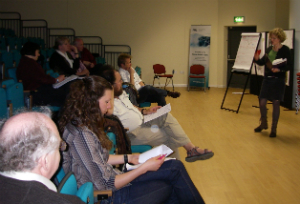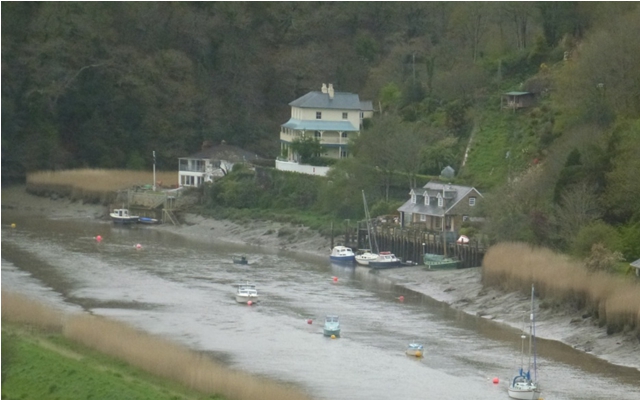Introduction
 The project brought together 22 academics, research scientists and stakeholders to investigate how we put a value on what humans take from nature, such as food and fresh water and also on other benefits like participating in mountain sports or relaxing on a beach. We wanted to know how certain we could be about any value we worked out, and when and where we could use that value in helping society to make better decisions.
The project brought together 22 academics, research scientists and stakeholders to investigate how we put a value on what humans take from nature, such as food and fresh water and also on other benefits like participating in mountain sports or relaxing on a beach. We wanted to know how certain we could be about any value we worked out, and when and where we could use that value in helping society to make better decisions.
Study areas
We visited two different areas in the UK with contrasting landscapes to see what the human population gained from nature in these areas and how a value for these benefits could be derived.
 The first visit to the estuary of the River Tamar and the farms upstream in Devon and Cornwall looked at the impacts of human activity on water quality for both drinking water and for keeping the river and estuary in a good condition.
The first visit to the estuary of the River Tamar and the farms upstream in Devon and Cornwall looked at the impacts of human activity on water quality for both drinking water and for keeping the river and estuary in a good condition.
Our second visit took us to the Cairngorms National Park where we looked at the park plan and visited two land managers, one running a farm and the other managing land to encourage and protect birds.
Valuation challenges
We looked at two challenges in trying to value the benefits of nature.
Firstly, we understand a lot about how our environment and our human society works, but we do not understand it all. While we use our flood models to advise and make precautions, for example, they are often not able to tell us with certainty where a flood can occur.
Secondly, do we have the right information to help us estimate a value? If we only have the numbers of visitors in the area, it’s difficult to value the benefit of tourism to a specific village. We therefore need to use methods of estimating values for different geographical areas, and sometimes for different time periods.
At the study visits we found that putting a value on nature would be quite difficult. There was a lot of missing or uncertain information, and sometimes a value in terms of money was not a helpful idea.
Tool: Bayesian Belief Network
We looked carefully at several ecosystems and we could see how to use a tool (called a Bayesian Belief Network) to link together information and provide us with a value and an estimate of its uncertainty, just like in predicting a flood; it also had a good graphical presentation so users could understand what was going on.
Using regional information collected for a study on a farm was difficult, and there were no tools that could really make that easy at present. We concluded that the task of valuing nature was possible, but the tools needed improvement and much of the information you needed was not easily available.
It is misleading to provide a value for the benefits from nature that pretends to be more accurate than it really is, or is actually relevant for a different area or time than the decision that you want to make. We showed that people we met understood the problems and could use the information on the certainty of the value sensibly.
Aims
- Review a selection of ecosystem services in order to identify common themes related to scale and uncertainty and their relevance for sustainable valuation of ecosystem services and natural capital.
- Select case studies which are data rich and contrasting in ecosystem services and habitat (and associated biodiversity) to be analysed.
- Develop a framework to incorporate scale changes and uncertainty management.
Objectives
- Bring together a research team from a wide variety of disciplines to work on the issues.
- Identify a selection of ecosystem services for investigation.
- Determine the approach to the issues of uncertainty assessment and scale dependence within ecological and environmental systems for the selected ecosystem services and to quantify the links between ecosystem functions and ecosystem services.
- Consider the role of scale and uncertainty issues within the social, management, policy and economic influences on, and responses to, ecosystem service delivery, linking these with the ecological uncertainties.
- Take forward and consider the role of the scale and uncertainty constraints in illustrative monetary and non-monetary valuation metrics and their related decision processes for selected ecosystem services.
- Generate a future inter-disciplinary research agenda to address the uncertainty, scale and response function challenges in generic ecosystem services valuations.
Outputs
For academics
- Issues working paper reviewing existing methodology relevant to incorporating scale and uncertainty within an ecosystem services assessment and proposing a framework to assess in current project.
- Paper on assessment of the proposed framework in relation to data types, discipline compatibility and stakeholder needs/perceptions
- Open seminar linked to the final team meeting to communicate progress to other academics
For decision-makers and practitioners
- Presentations to stakeholders at the study area workshops on applying the sketch framework.
- Presentations to stakeholders in each study area of the outcomes of the project.
The team
Principal Investigator:
Mr Ron Smith - Centre for Ecology and Hydrology
Co-Investigators:
Dr Melanie Austen - Plymouth Marine Laboratory
Dr Stephen Baillie - British Trust for Ornithology
Prof Stephen T Buckland - University of St Andrews
Mrs Kaja Curry - Tamar Estuaries Consultative Forum
Dr Jan Dick - Centre for Ecology and Hydrology
Prof David Elston - BioSS
Dr Mark Everard - Private consultant
Prof Denis Fischbacher-Smith - University of Glasgow
Professor Nick Hanley - University of Stirling
Dr Caroline Hattam - Plymouth Marine Laboratory
Professor Anne Magurran - University of St. Andrews
Dr Marion Potschin - University of Nottingham
Professor Marian Scott - University of Glasgow
Prof Bill Slee - James Hutton Institute
Dr Paul J. Somerfield - Plymouth Marine Laboratory
Mr Hamish Trench - Cairngorms National Park Authority
